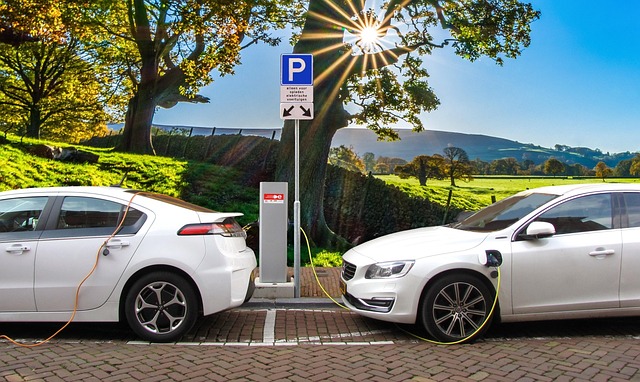Looking to register your car in California? This comprehensive guide walks you through every step, from understanding eligibility to completing the DMV VIN verification process. Ensure a smooth registration experience by gathering the necessary documents and following our clear instructions. We’ll also cover how to pay fees and obtain license plates, making it easy to get your vehicle legally registered in The Golden State.
- Understand Eligibility for Car Registration in California
- Gather Necessary Documents for Vehicle Registration
- Perform DMV VIN Verification Process Step-by-Step
- Complete and Submit California Vehicle Registration Application
- Pay Car Registration Fees and Obtain License Plate
Understand Eligibility for Car Registration in California

Before you begin the registration process, it’s crucial to understand if your vehicle meets California’s eligibility criteria. The state Department of Motor Vehicles (DMV) has specific requirements for registering a car, including checks on the vehicle’s history and condition. One essential step is the DMV VIN verification process, which involves using the unique Vehicle Identification Number (VIN) to access critical information about the car’s past, ensuring it hasn’t been reported stolen or had outstanding issues.
Additionally, consider utilizing mobile VIN verification services for convenience. These tools allow you to perform a quick and efficient vin inspection from the comfort of your home or even while on the go, making it easier to confirm your vehicle’s eligibility before heading to the DMV.
Gather Necessary Documents for Vehicle Registration

Before you start the registration process, it’s crucial to gather all the essential documents for vehicle registration in California. This includes your vehicle’s registration certificate (if previously registered), proof of ownership, and a valid driver’s license. Additionally, you’ll need to complete a Vehicle Identification Number (VIN) verification, which can be done through the DMV or by utilizing a mobile VIN verifier for a more convenient option. A mobile VIN inspection ensures accuracy and saves time, as it allows you to verify your vehicle’s history digitally without visiting a physical location.
Remember to have these documents ready, as they play a vital role in the registration procedure. By having them on hand, you can streamline the process and avoid any potential delays or complications.
Perform DMV VIN Verification Process Step-by-Step

To start the DMV VIN verification process, gather all necessary documents, including the title, registration application, and proof of insurance. Visit a local California DMV office or use their online services to initiate the procedure. Next, identify your vehicle’s unique VIN (Vehicle Identification Number) located on the driver’s side door frame or in the engine bay.
Input the VIN into the provided field during the online process or convey it to the DMV representative if conducting the verification in-person. The system will cross-reference this number with their records to ensure the vehicle’s history is clear and match the details on your documents. This step includes a comprehensive check for any outstanding warrants, previous accidents, or title issues. A successful vin inspection allows you to proceed with registration, ensuring a smooth process for your new car in California.
Complete and Submit California Vehicle Registration Application

To register your car in California, the first step is to complete and submit the California Vehicle Registration Application. This form requires essential information about your vehicle, including its make, model, year, and unique identifier known as the Vehicle Identification Number (VIN). The VIN is crucial for several reasons, one being that it facilitates a mandatory DMV vin verification process to ensure the vehicle’s authenticity.
When filling out the application, make sure all details are accurate and up-to-date. Once completed, submit the form along with any required fees and necessary documents like proof of insurance and your driver’s license to your local California Department of Motor Vehicles (DMV) office. Consider using a mobile vin verifier or conducting a vin inspection to ensure all information is correct before submitting, as errors can delay the registration process.
Pay Car Registration Fees and Obtain License Plate

After completing your car purchase, it’s time to register your vehicle with the California Department of Motor Vehicles (DMV). The registration process involves several steps, including a crucial one: paying the car registration fees. These fees vary based on the type and age of your vehicle. You can pay online, by phone, or in person at any DMV field office. Once your payment is processed, you’ll receive a Vehicle Registration and a temporary license plate.
Before taking to the road, make sure to obtain your permanent license plates. These plates need to be displayed on both the front and rear of your vehicle for legal operation. To ensure everything is done correctly, consider scheduling a mobile vin inspection or using a mobile vin verifier to simplify the process. The DMV recommends verifying your Vehicle Identification Number (VIN) as part of their vin verification service to prevent fraud and ensure that your vehicle’s registration records are accurate.
Registering a car in California is a straightforward process that requires understanding eligibility criteria, gathering essential documents, and completing key steps like DMV VIN verification. By following these guidelines, including performing a meticulous dmv vin verification, and submitting the necessary applications along with paying relevant fees, you can ensure your vehicle’s legal status in the Golden State. This process not only facilitates smooth operation but also ensures safety and roadworthiness for all California drivers.
